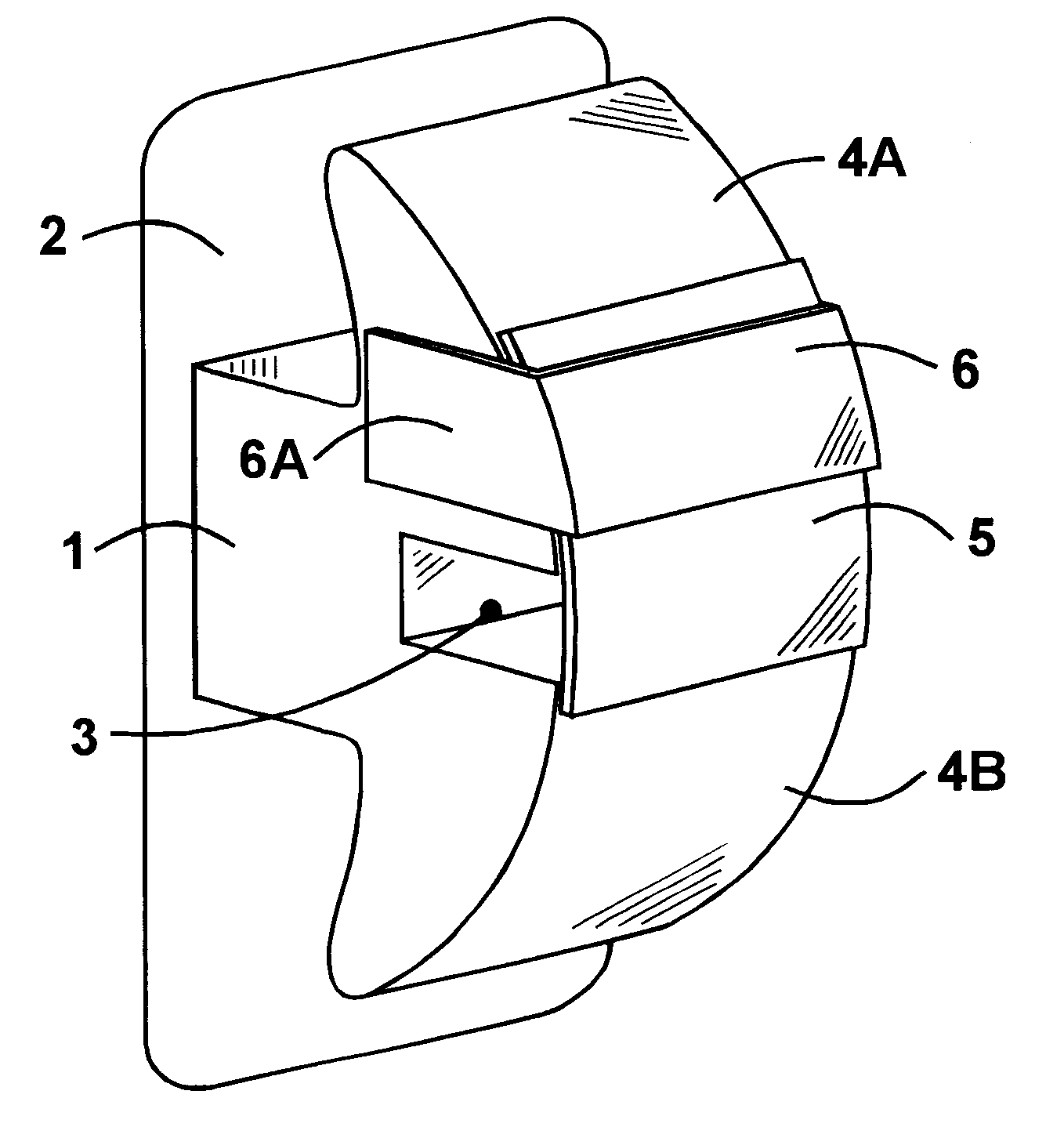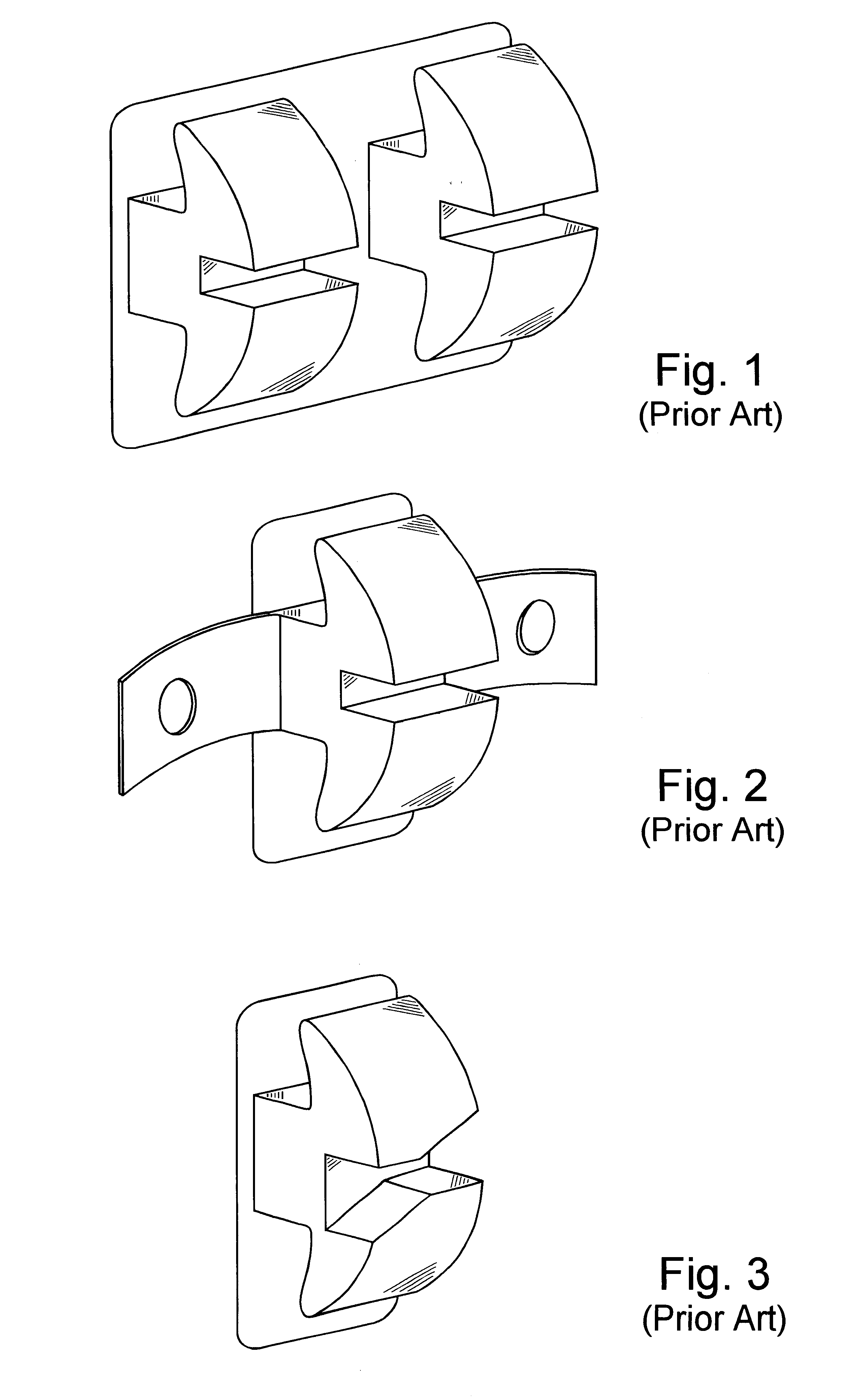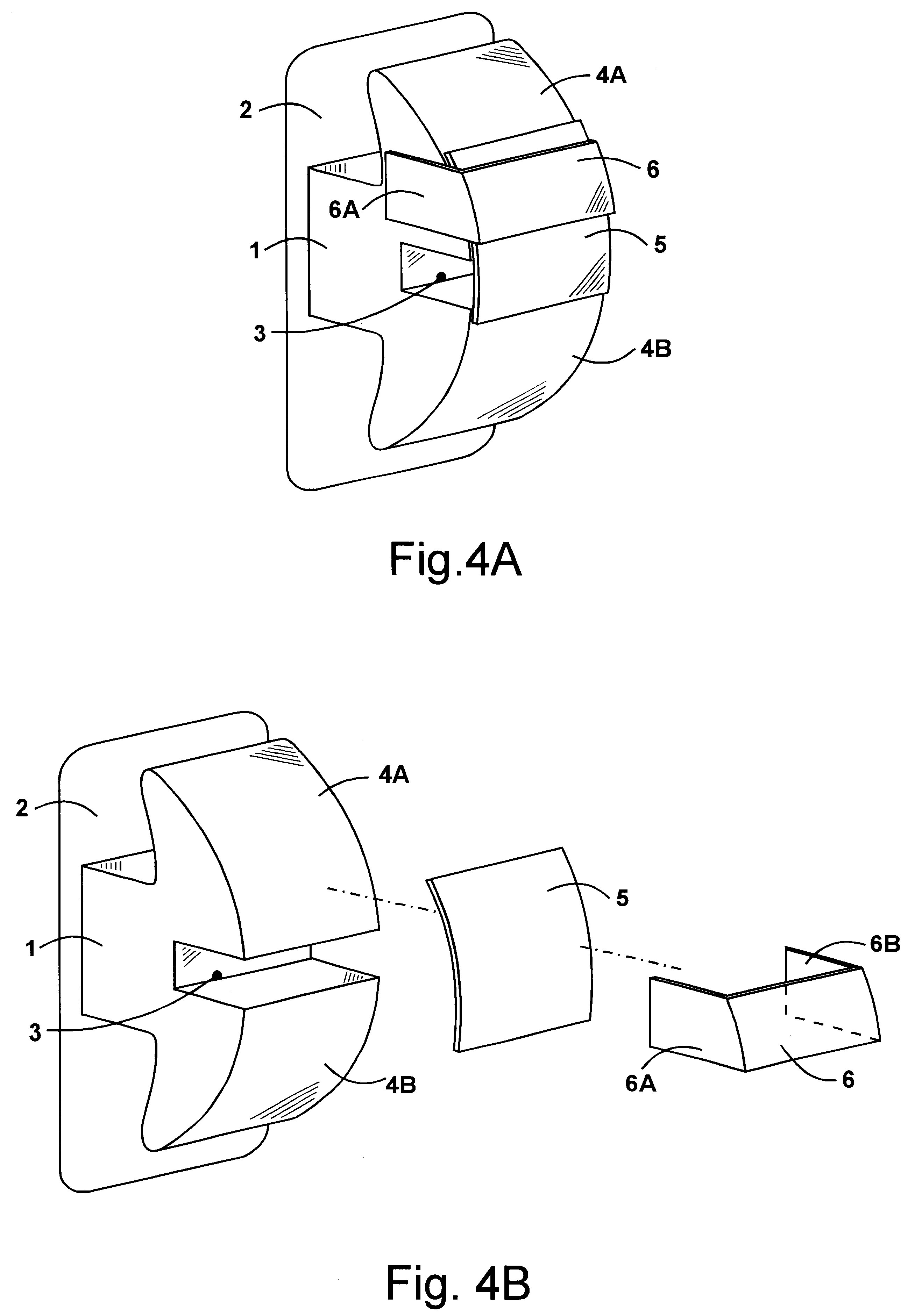Self-locking orthodontic bracket
a self-locking, orthodontic technology, applied in the field of self-locking orthodontic brackets, can solve the problems of affecting the movement of teeth, friction between the brackets and the arch wire, and ligatures that make proper oral hygiene more difficult, etc., to achieve the effect of reducing the time taken, convenient use and convenient fabrication
- Summary
- Abstract
- Description
- Claims
- Application Information
AI Technical Summary
Problems solved by technology
Method used
Image
Examples
Embodiment Construction
The following describes the embodiments of present invention as illustrated in FIGS. 4A to 32.
FIGS. 4A, 4B, 5, and 6 show a self-locking orthodontic bracket of the invention. The bracket includes a body 1 that is attached to a base 2. The body of the bracket can be of metal, plastic, ceramic or of any other permissible material. The base 2 is contoured to fit a tooth surface and can be bonded directly to a tooth or can be attached to a band material. The body 1 of the bracket has an arch wire slot 3 extending horizontally across the labial / buccal surface to engage arch wires during orthodontic treatment to exert pressure. At least one tie wing 4A projects out vertically from the body 1, which may be of a gingivally-projecting or occlusally-projecting nature. Another tie wing 4B may extend out vertically opposite to the tie wing 4A. These are used for the attachment of auxiliaries like elastic chains and ligature wires. A retainer member 6 having a transverse part and two horizontal ...
PUM
 Login to View More
Login to View More Abstract
Description
Claims
Application Information
 Login to View More
Login to View More - R&D
- Intellectual Property
- Life Sciences
- Materials
- Tech Scout
- Unparalleled Data Quality
- Higher Quality Content
- 60% Fewer Hallucinations
Browse by: Latest US Patents, China's latest patents, Technical Efficacy Thesaurus, Application Domain, Technology Topic, Popular Technical Reports.
© 2025 PatSnap. All rights reserved.Legal|Privacy policy|Modern Slavery Act Transparency Statement|Sitemap|About US| Contact US: help@patsnap.com



